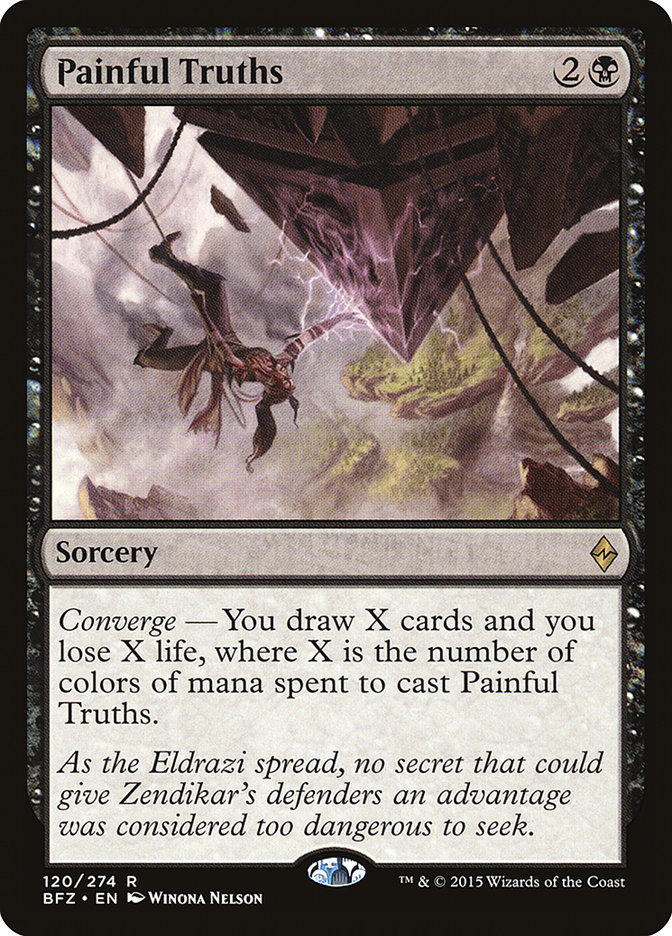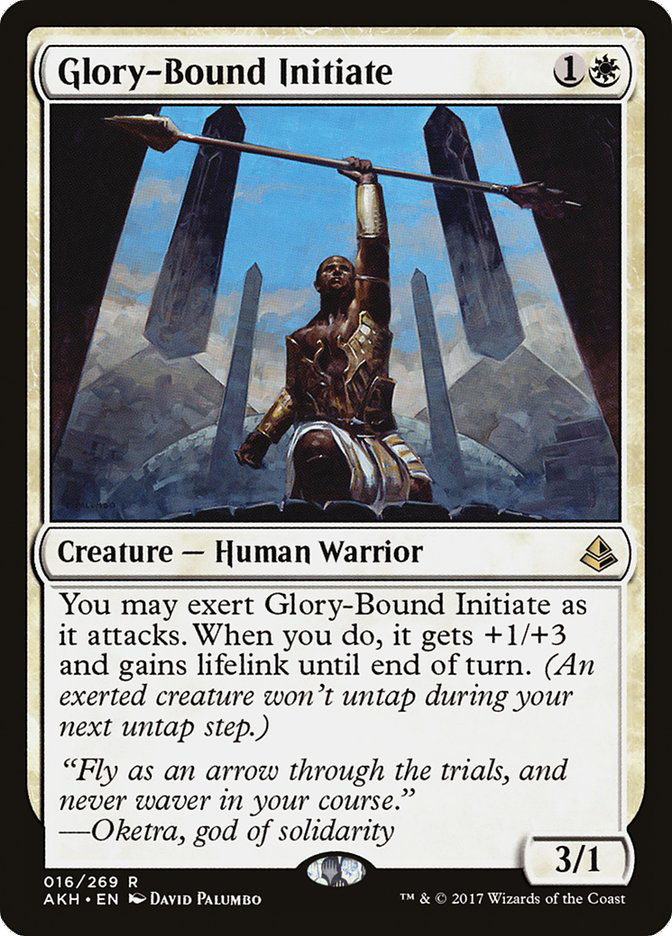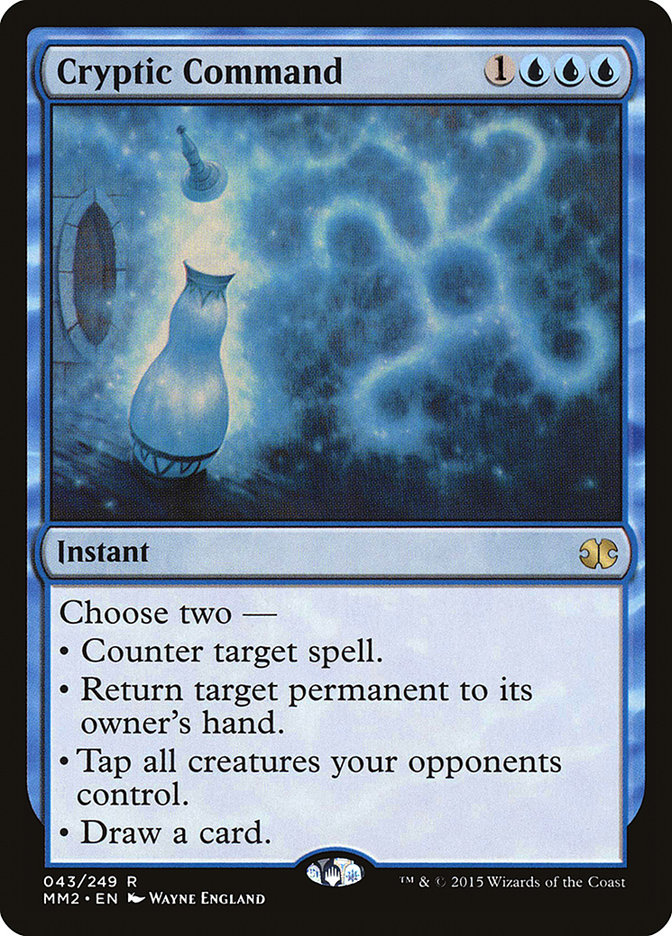Sometimes, a moment happens that sets your imagination on fire. To mix up our elements, call it a sea-change, and you’re not wrong.
Sometimes it starts slowly.
Creatures (14)
- 1 Dragonmaster Outcast
- 4 Mantis Rider
- 2 Soulfire Grand Master
- 3 Tasigur, the Golden Fang
- 4 Jace, Vryn's Prodigy
Planeswalkers (1)
Lands (26)
Spells (19)
- 2 Dispel
- 4 Crackling Doom
- 1 Utter End
- 2 Dig Through Time
- 2 Wild Slash
- 3 Ojutai's Command
- 2 Kolaghan's Command
- 3 Fiery Impulse
Sideboard

Back in 2015, at Grand Prix Quebec City, Dan Lanthier won with Jeskai Black.
A card was lurking in the sideboard, and it would start to emerge, quite quickly.
In Las Vegas, Brian Braun-Duin would move it to the maindeck:
Creatures (12)
Lands (25)
Spells (23)
- 1 Dispel
- 4 Crackling Doom
- 2 Utter End
- 2 Treasure Cruise
- 2 Ojutai's Command
- 2 Roast
- 3 Kolaghan's Command
- 4 Fiery Impulse
- 3 Painful Truths
Sideboard

A week later, Todd Anderson would add another copy of the card, but to the sideboard.
I know that the idea of a full set of four Painful Truths existed before Todd Anderson played it. Hell, I played four copies of the card in Las Vegas as well.
Creatures (11)
Planeswalkers (1)
Lands (26)
Spells (22)

I know that, in my deck, playing four copies of the card wasn’t my idea, but rather an idea I picked up from others in the community; I can’t recall where, nor can I find a specific list to point to that was the clear successful trailblazer (though I suspect it may have been the influence of Andrew Baeckstrom or Matt Severa).
Soon, running four copies of the card would be commonplace. One of my favorites would be this list from the master Yuuya Watanabe, where he finished third in a MOCS event.
Creatures (12)
Planeswalkers (2)
Lands (26)
Spells (20)

Whether it was Soulfire Grand Master to begin with or Kalitas, Traitor of Ghet later, lifegain was the “safe” way to make use of Painful Truths. A month later, Ben Stark would finish second in Grand Prix Paris with four copies of the card, supported by two Kalitas, Traitor of Ghet and three Soulfire Grand Master.
What makes the card so powerful is long-explored, with our Standard of yesteryear making it all so clear: any game of attrition is quite devastated when so much raw card draw happens, especially so cheaply. Mulligans also become far easier to take when you can recover. So long as you have a very efficient set of plays to make, the card is devastating in its power.
What holds it back? Simply put, too much pain. It’s easy to throw yourself into a loss, especially in a format as efficient as Modern, by not only taking off time to draw cards, but also losing life in the process. It doesn’t even have to be Modern for this to happen. Let’s go back in time to Daniel Lanthier’s finals win in Grand Prix Quebec City 2015:
Skip to 27:56. Finalist Omar Beldon was in a rough place, having mulliganed, under pressure from Mantis Rider, not holding the proper removal to take care of the threat at hand, and running too slowly to have Mastery of the Unseen properly function as lifegain. Still, this game very nearly could have been won, had a Fiery Impulse been in hand to turn the tide.
In Modern, the vast majority of the time that a player dies, it is going to be from an attack. Burn does exist, both as an archetype and as an umbrella to describe Lightning Bolt and the like, but there really isn’t a lot of either. In the recent Grand Prix in Kobe, the Top 8 Affinity player ran two burn spells (Galvanic Blast) and the Death’s Shadow player ran two (Lightning Bolt). Technically, Conflagrate and Collective Brutality give a deck some reach to enact a kill, but they mostly feel like they’re in a different category.
What all of this means is that, provided you can prevent yourself from dying, maybe Painful Truths is a reasonable place to be?
Akio Chiba seemed to make this clear with his Top 8 finish against a field of almost 3,000 players.
Creatures (9)
Lands (23)
Spells (28)

This is a pretty joy-inducing list to read. It feels like what it is saying is simple: if you so desire, you can handle the truth.
If it lives, Glory-Bound Initiate is happy to give you the gift of four life. That, my friends, is a great, hopping gob of life. It isn’t just Glory-Bound Initiate that is trying to help out, but a few other cards as well.
Certainly, we occasionally see Batterskull show up, usually in a sideboard. Devour Flesh is a fine card, and while it will usually be pointed at the opponent, it is easy to imagine it being pointed at oneself out of necessity. Shambling Vent and Collective Brutality both have seen a great deal of play before this, and given that we are looking at a W/B base, it seems quite reasonable to expect that our base will begin with those six cards; Chiba married his base to blue, but there isn’t anything demanding that we do that.
Of all of the cards in Akio Chiba’s list, this is the only one that I feel pretty uninspired by. The heavy blue requirement of the card is one thing, but the thing I find most problematic about it is the cost. If I’m going to be playing Painful Truths, I want to be being wildly efficient. Still, that feeling aside, if we think of the cards at the “top” of the curve, Cryptic Command feels like it could be a reasonable “final nail” in a wide enough variety of matchups, perhaps the card is much better than I’m giving it credit for, especially given the final result.
While Chiba’s list is obviously a vetted take on blue joining with the Painful Initiation of Painful Truths and Glory-Bound Initiate, I’m inclined to share a different take on the idea.
Creatures (11)
Lands (24)
Spells (25)

This deck is a lot more interested in a lower curve, and yet still has more mana sources. This is, in part, because of the move away from blue as a main color, and turning to blue as a splash color, running a total of “five” Snapcaster Mage (adding a Jace, Vryn’s Prodigy as a “fifth” copy), and a pair of Mana Leak. Still, there is a Tasigur, the Golden Fang to think about, so more blue is in the deck besides, but for the most part, that blue is mostly found in the sideboard.
There isn’t much to do with extraneous discard that the deck might draw (from a total of nine in all), but Collective Brutality and Jace, Vryn’s Prodigy at least give some room for the cards to find a use. A Spell Snare or Spell Pierce could be a better choice than the heavy discard, but I find that I like being a bit more active in my Painful Truths decks, historically, even if a little countermagic in the mix can be very intensely valuable.
I could feel the mana being a little clunky, but this is an early draft, and I’m sure that could be improved. One of the things that felt very nice to me, though, was the smoothness of some of the opening game. Take this as an example:
Turn 1: Tapped land or discard
Turn 2: Two discard, two drop, or discard plus tapped land
Turn 3: Painful Truths
This scenario will put you at a nearly full hand (not discarding from hand size), and likely having blunted problems, either with discard or removal.
This is a rough take, but the concept can be opened up to the other two colors as well. Take this first attempt at running it green and going Abzan:
Creatures (15)
Planeswalkers (3)
Lands (24)
Spells (18)

There are some things in this list I find a bit problematic. In my rush towards Painful Truths, I’ve stepped away from Dark Confidant.
I absolutely love this card, especially in a Liliana of the Veil list. It can often feel like, in many instances, if you untap with Dark Confidant, it takes an incredible amount of pressure to lose. With that being said, perhaps this isn’t the best shell to explore the idea of Painful Truths. Perhaps a better one is one where efficient interaction is at a premium.
While I’m not 100% sold that now is the right time to be a Lightning Bolt deck, there is something exciting about running a lot of discard alongside Lightning Bolt, Fatal Push, and Painful Truths. There are two ways I could picture building this. First is a wilder planeswalker build fueled by Painful Truths, but I just don’t see that jiving as well with the card as a more straightforward midrange Mardu list like we used to see more often in the format.
Building off of the shell of Paul Rietzl’s old Mardu list, I came to this:
Creatures (8)
Planeswalkers (4)
Lands (24)
Spells (24)

While the baseline of the deck is powerful in its own right, filled with a ton of powerful cards, Modern is diverse enough that this deck has sometimes suffered from being able to provide the right kinds of responses to some narrow decks. Sideboarding should help with this problem, but, in practice, it has been a rough situation for the deck in the past.
One of the elements that I always felt held back a deck like this is how difficult it felt to deal with something that went purely over-the-top, especially with regards to mana. The combination of Fulminator Mage with Liliana, the Last Hope really feels like it fights a huge portion of this problem. Lost Legacy actually solves a great deal of other narrow problems.
All of this exploration of Glory-Bound Initiate wouldn’t have even come into my mind had it not been for Akio Chiba’s Top 8 at the incredibly huge Grand Prix in Kobe. Playing out his list in a few matches really made me think that perhaps Painful Truths has been criminally underplayed and only needed a little push to get through to the next level in Modern. I’m still tinkering with the details, but the initial signs are promising.






